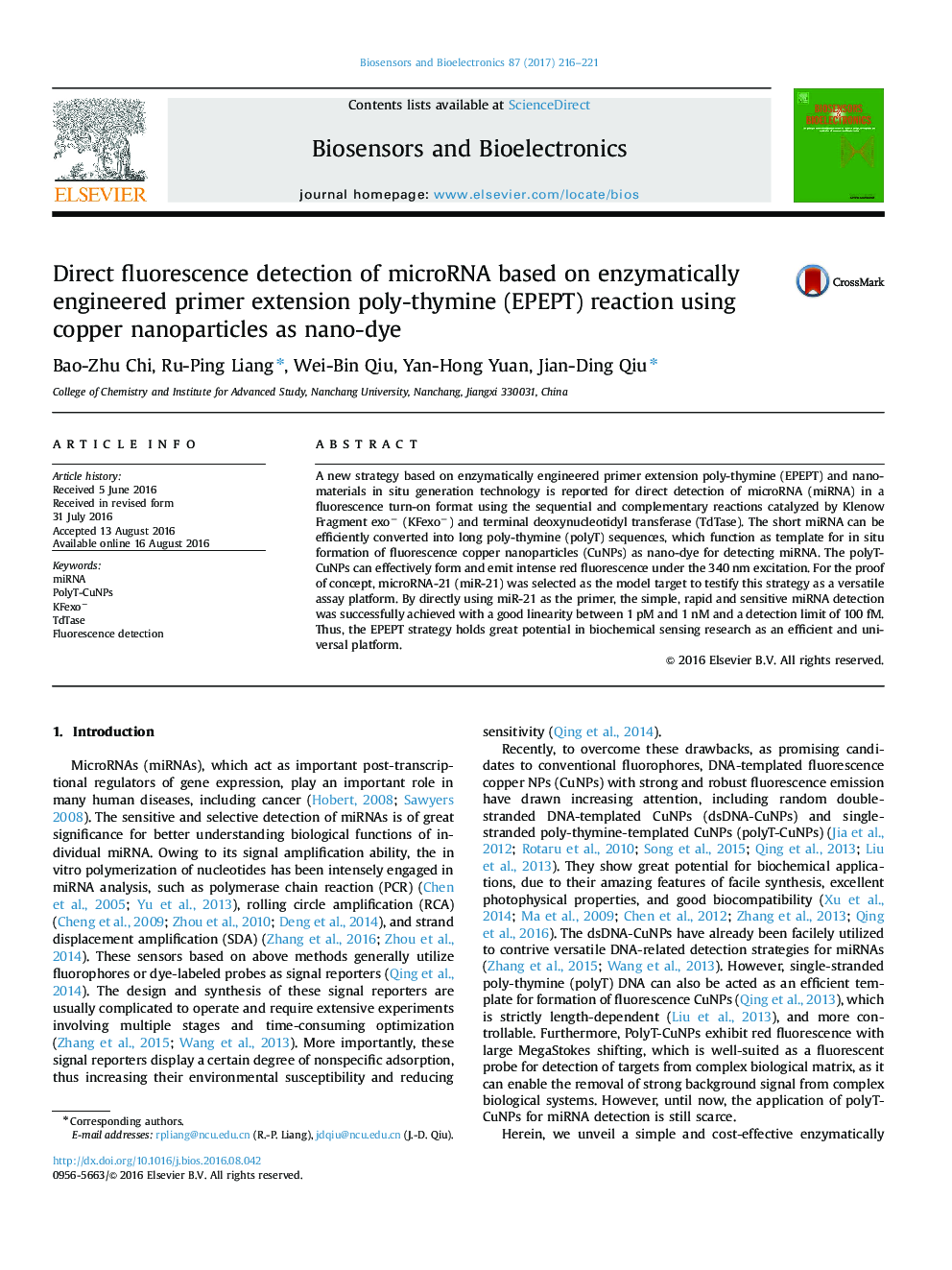| Article ID | Journal | Published Year | Pages | File Type |
|---|---|---|---|---|
| 866181 | Biosensors and Bioelectronics | 2017 | 6 Pages |
•It’s the first time to detect miRNA based on EPEPT reaction and CuNPs nano-dye.•PolyT sequence converted from the miRNA acts as a template for CuNPs formation.•The assay employs CuNPs as reporters, making it more rapid, simple and economic.•The polyT-CuNPs emit red fluorescence with excellent Stokes shifting, avoiding interference.•The turn-on mode offered more sensitivity and reduced the false positive signal.
A new strategy based on enzymatically engineered primer extension poly-thymine (EPEPT) and nanomaterials in situ generation technology is reported for direct detection of microRNA (miRNA) in a fluorescence turn-on format using the sequential and complementary reactions catalyzed by Klenow Fragment exo− (KFexo−) and terminal deoxynucleotidyl transferase (TdTase). The short miRNA can be efficiently converted into long poly-thymine (polyT) sequences, which function as template for in situ formation of fluorescence copper nanoparticles (CuNPs) as nano-dye for detecting miRNA. The polyT-CuNPs can effectively form and emit intense red fluorescence under the 340 nm excitation. For the proof of concept, microRNA-21 (miR-21) was selected as the model target to testify this strategy as a versatile assay platform. By directly using miR-21 as the primer, the simple, rapid and sensitive miRNA detection was successfully achieved with a good linearity between 1 pM and 1 nM and a detection limit of 100 fM. Thus, the EPEPT strategy holds great potential in biochemical sensing research as an efficient and universal platform.
